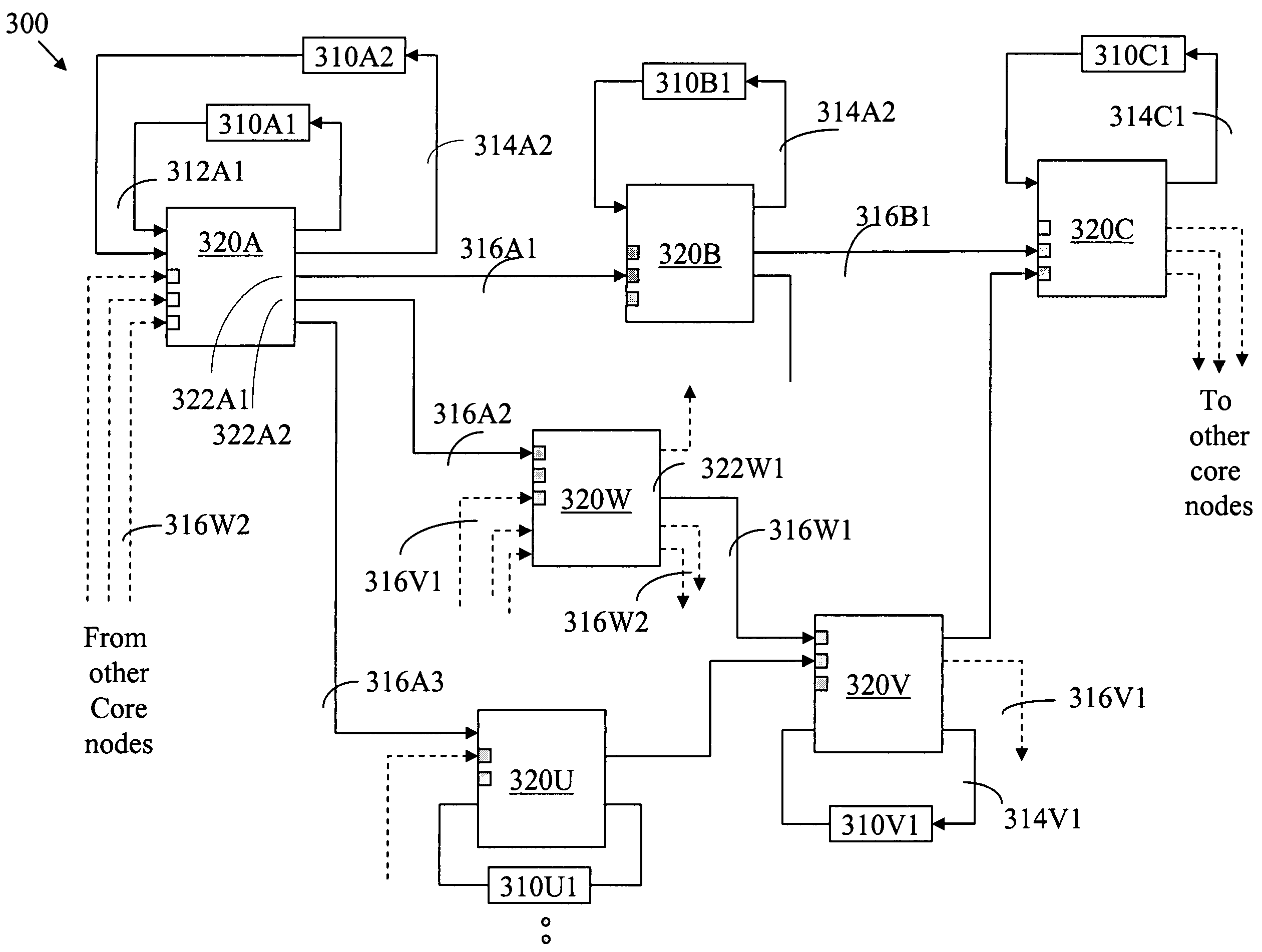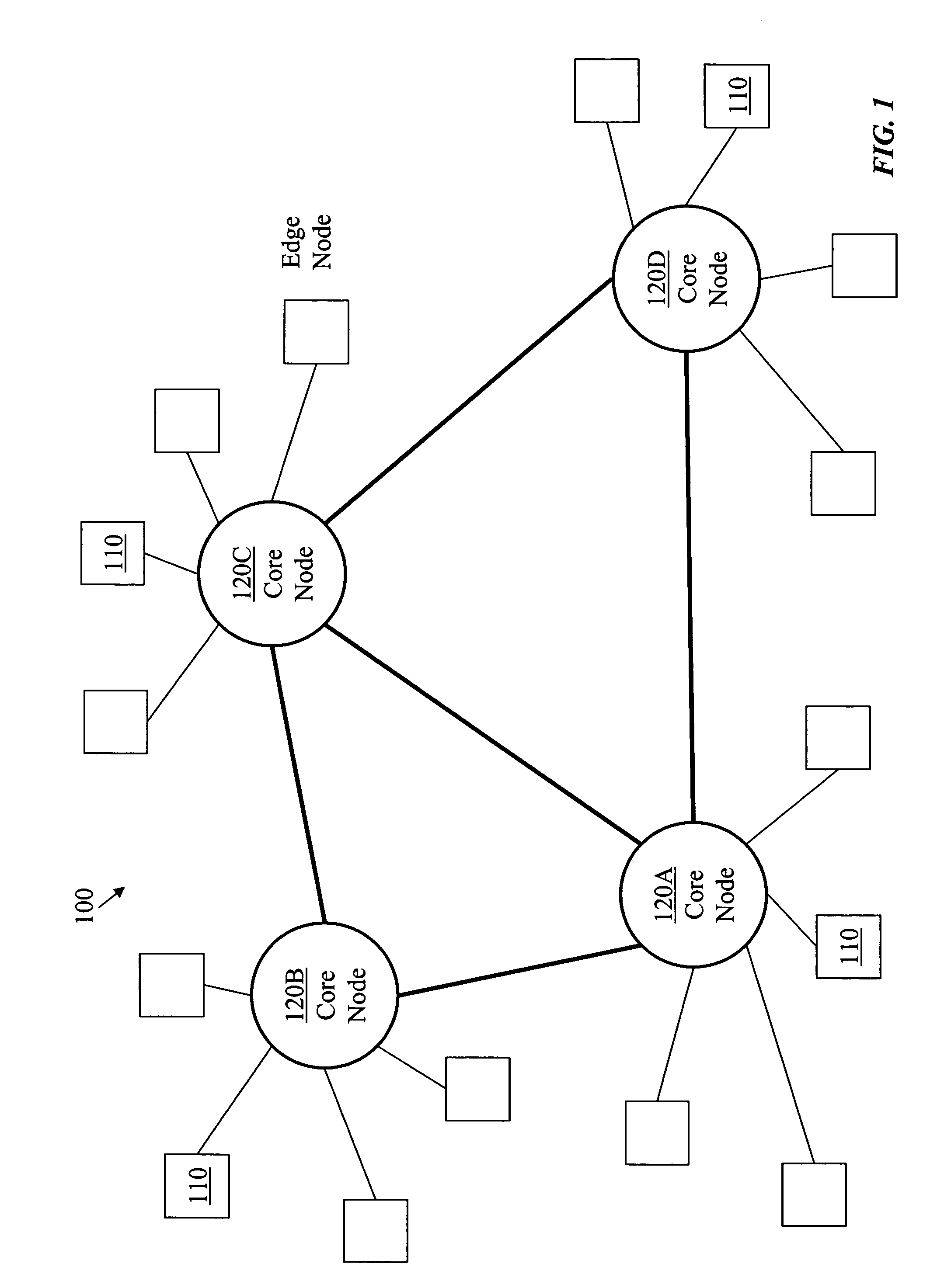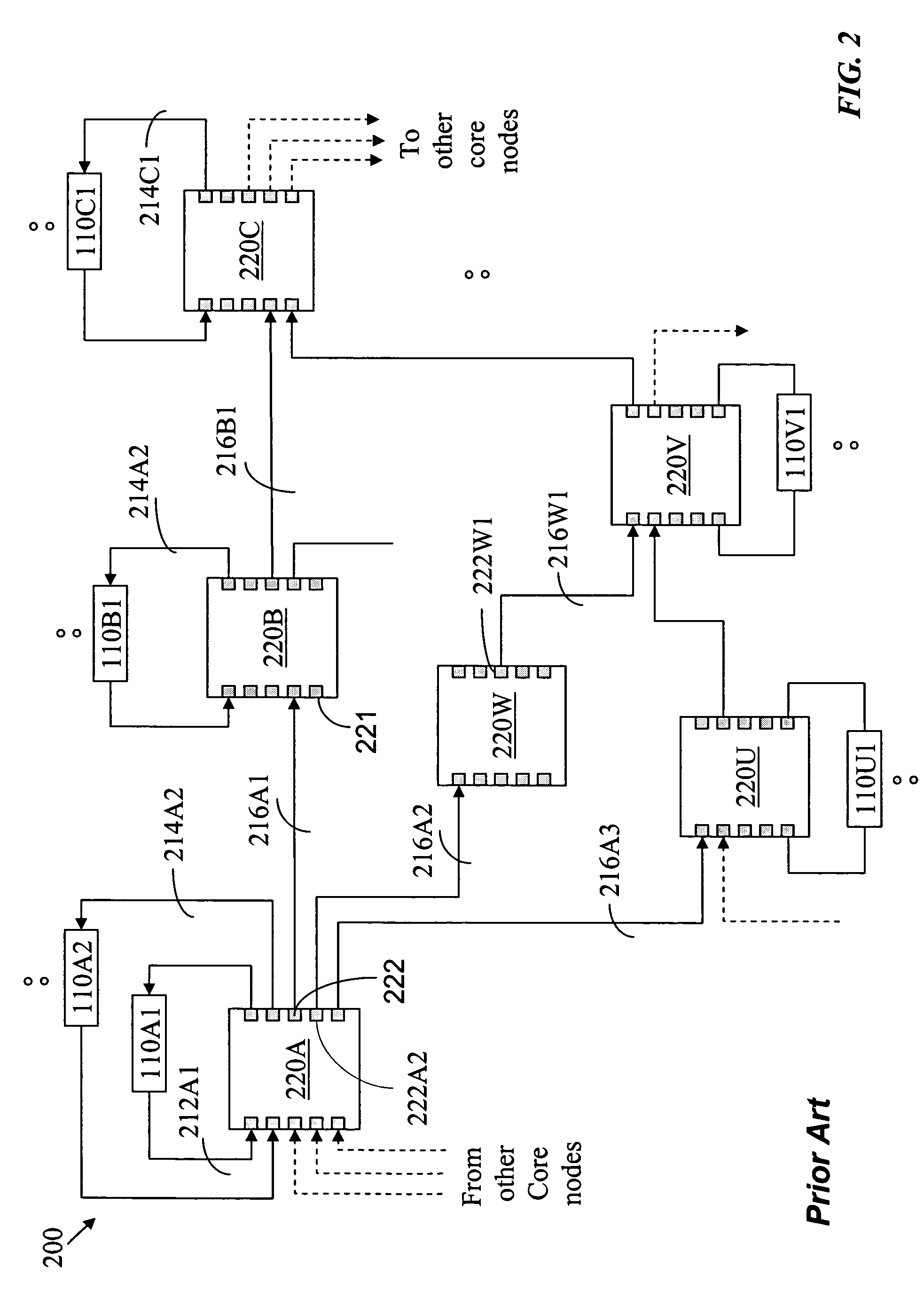Bimodal burst switching
a burst switching and bimodal technology, applied in data switching networks, frequency-division multiplexes, instruments, etc., can solve the problems of burst loss, burst delay, burst loss, etc., and achieve the effect of zero burst loss and low delay
- Summary
- Abstract
- Description
- Claims
- Application Information
AI Technical Summary
Benefits of technology
Problems solved by technology
Method used
Image
Examples
Embodiment Construction
[0061]The terminology used in describing the embodiments of the invention is listed below.
[0062]Edge node: A switching node having subtending information sources and sinks and connecting to other nodes is called an edge node.
[0063]Source node: An edge node transmitting signals, received from subtending sources, to other nodes is called a source edge node or a source node.
[0064]Sink node: An edge node receiving signals from other nodes, for delivery to subtending sinks, is called a sink edge node or a sink node.
[0065]Core node: A switching node connecting only to other switching nodes, which may be edge nodes or core nodes, is called a core node.
[0066]Input port: A port of a switching node receiving information signals from either a subtending information source or from an external node is called an input port.
[0067]Output port: A port of a switching node transmitting information signals to either a subtending information sink or an external node is called an output port.
[0068]Outer ...
PUM
 Login to View More
Login to View More Abstract
Description
Claims
Application Information
 Login to View More
Login to View More - R&D
- Intellectual Property
- Life Sciences
- Materials
- Tech Scout
- Unparalleled Data Quality
- Higher Quality Content
- 60% Fewer Hallucinations
Browse by: Latest US Patents, China's latest patents, Technical Efficacy Thesaurus, Application Domain, Technology Topic, Popular Technical Reports.
© 2025 PatSnap. All rights reserved.Legal|Privacy policy|Modern Slavery Act Transparency Statement|Sitemap|About US| Contact US: help@patsnap.com



